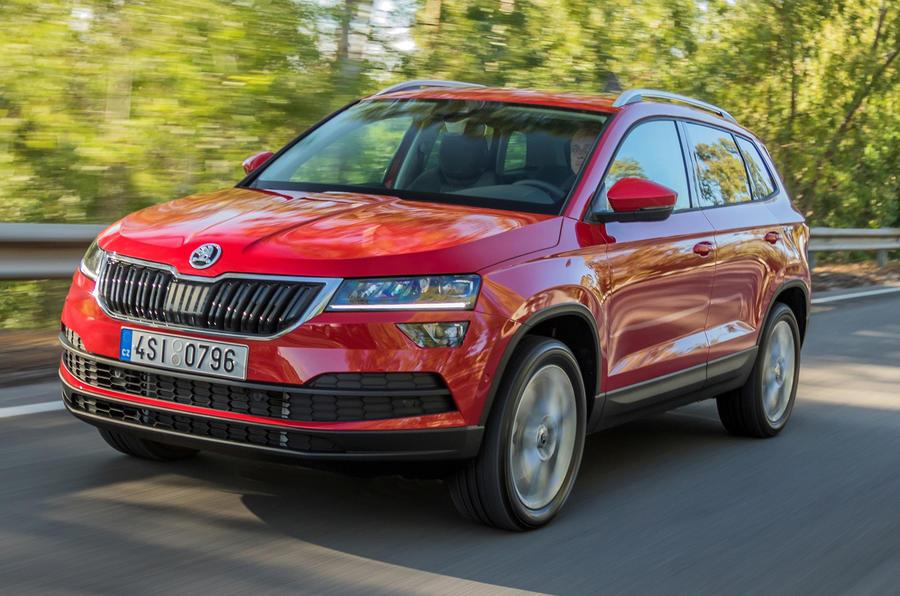Review: Skoda Karoq 2.0 TDI 4x4
Diesel engine, all-wheel drive – is this the classic version of the Karoq?

The Karoq looks like a fairly chunky and chiselled SUV, an unlikely successor to the popular Yeti. The new SUV is based on the parent company’s MQB platform that VW is putting under any number of vehicles as a modular platform, and so is a much more modern take on the crossover/mid SUV than the rather boxy Yeti.
We’re driving the 2.0-litre TDI diesel with 148bhp, although there is a less powerful diesel (113bhp) as well as two petrol engines. We have met this engine often, and it still does the job admirably. The power output is ample, but note the 251lb ft of torque, more than enough to haul this near-1500kg vehicle around without breaking a sweat and without making a fuss. The four-wheel drive of course just extends all that further out.
It’s not very thrilling if you try to wring the revs out, but with maximum torque down at 1750rpm there’s no real reason to either. Owners are more likely to stay in their and the Karoq’s comfort zone, and if they stay there they will enjoy an excellent ride.
We’d go for the 17in rims rather than anything bigger, and with those the Karoq deals with potholes and bumps in a really admirably soothing manner. Others have noted that an Audi A6 of not that long ago would have had a ride like this and everyone would have loved it. Now you can have it in a mid-market SUV.
That does mean that if you start throwing the vehicle around you will get quite a bit of body roll but most owners would probably prefer that to a taut handling package that led to an overly firm ride quality.
The cabin exhibits more traces of Audi in the incredibly tight lines and high quality of just about everything you see and touch. There is also a digital instrument panel that owes something to Audi’s Virtual Cockpit, along with a choice of an 8in or 9.2in glass-faced central touchscreen infotainment system.
With the Karoq Skoda has moved upmarket another step. This is a remarkably composed, refined and classy bit of kit. In the taut cabin there’s a sense of isolation (particularly with the petrol engine choices) as well as a feeling of relaxation as the miles pass. This is an SUV that is equally happy tootling through the city as it is nailing the miles down the motorway.
It’s not exactly a driver’s vehicle, you’d probably prefer the Seat Ateca, which shares some of the mechanicals, for that, and there’s an element of that rather impersonal feeling you can get with Audis, rather than the character that the Yeti displayed. But you’ll like the Karoq because it’s so damn good at what it does.
It engenders a feeling of reliability rather than raw excitement, and in relationship terms we know which of those lasts longer.
Join our commenting forum
Join thought-provoking conversations, follow other Independent readers and see their replies
Comments